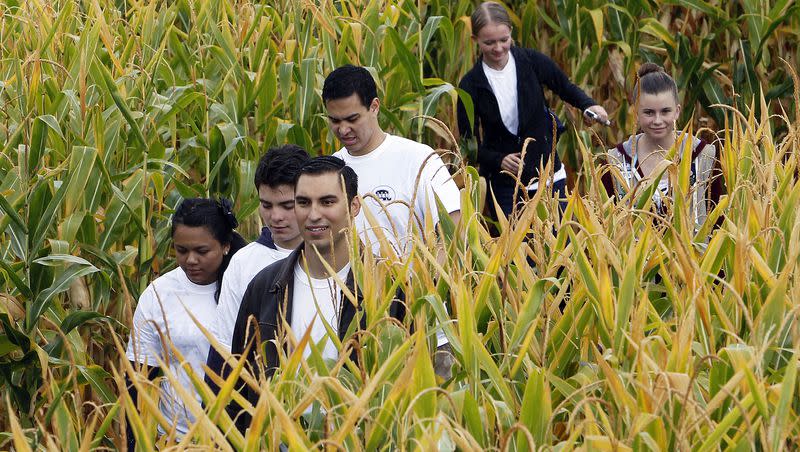How to improve your sense of direction

Millions of people get around every day using maps and other tools on their smartphones. But some people seem to have an innate sense of direction, a kind of way-finding internal compass to help them get where they want to go — or find their way back.
Some people have a great sense of direction apparently built in. Others don’t. But experts say you can chart a course to improve your ability to get oriented and move around unaided. It just takes a bit of effort.
According to an article by the BBC, the brain has cognitive maps, “which are essentially mental models of space. Researchers continue to debate what shape cognitive maps take: for instance, whether humans create representations of maps in their brains to navigate or if they are graphics.”
Scientists think the cognitive map is in the hippocampus, the little seahorse-shaped part of the brain that works with memory. The article said that part of the brain works with nearby regions that are important in orientation.
A study published in the journal Nature and cited in the book “Keep Getting Lost? Maybe You Grew Up on the Grid” suggests that growing up in a community where streets form grids and their names contain directional cues may actually stunt a natural sense of direction because you don’t need to build one to get around. And those with a seemingly natural-born sense of direction did probably hone it as they were growing up.
It turns out that finding your way involves many parts of the brain. Recognizing stable landmarks seems to rely on activity in the retrosplenial cortex, BBC reported.
Related
Walking, jogging, yoga: Effective treatments in the battle with depression
Exercise advantage: Women gain same health benefits with less effort than men
People who are highly skilled navigators have different-looking brains. For instance, imaging of London cabbies’ brains “show growth in the hippocampus,” per BBC. And they’re famous for knowing their way around.
A different article in BBC Science Focus reported that “knowing which way is which depends on compass-like processes in the frontal and temporal lobes of the brain.” Those seem larger in people who have a better sense of direction.
Improving your navigation skills
One way to build a better navigation system internally is to simply pay better attention to what the BBC calls “environmental cues,” including “wind, sun and slopes.”
Being willing to explore is also crucial. Folks who are nervous about going into unfamiliar territory don’t navigate well, perhaps in part because anxiety and spatial tasks crowd each other out. But they likely lag, too, because they don’t expand their sense of direction or mental map.
In an article for CBS News, that company’s chief medical correspondent, Dr. Jon LaPook, asked skilled navigators for advice because he wanted to improve his own sense of direction, which he said is not stellar.
Vermont Game Warden Mark Schichtle’s land navigation skills advice includes “as you’re walking, just periodically turn around and look to see what the return trip looks like.”
LaPook also wrote that “in 2014, the Nobel Prize was awarded to the scientists who discovered place cells (which pinpoint particular locations to help us recognize our environment) and grid cells (that make a grid-like pattern) to help track distance and position.”
He wrote that a sense of direction can be “honed,” but it takes awareness. You have to pay attention to your surroundings, for one thing. And use tools to help build muscles. But don’t overly rely on them.
A researcher from Temple University, Nora Newcombe, told LaPook that relying too heavily on GPS, for instance, stops people from “forming an overview of the environment. You’re preventing yourself from building up something that I strongly feel is part of appreciating the world.”

